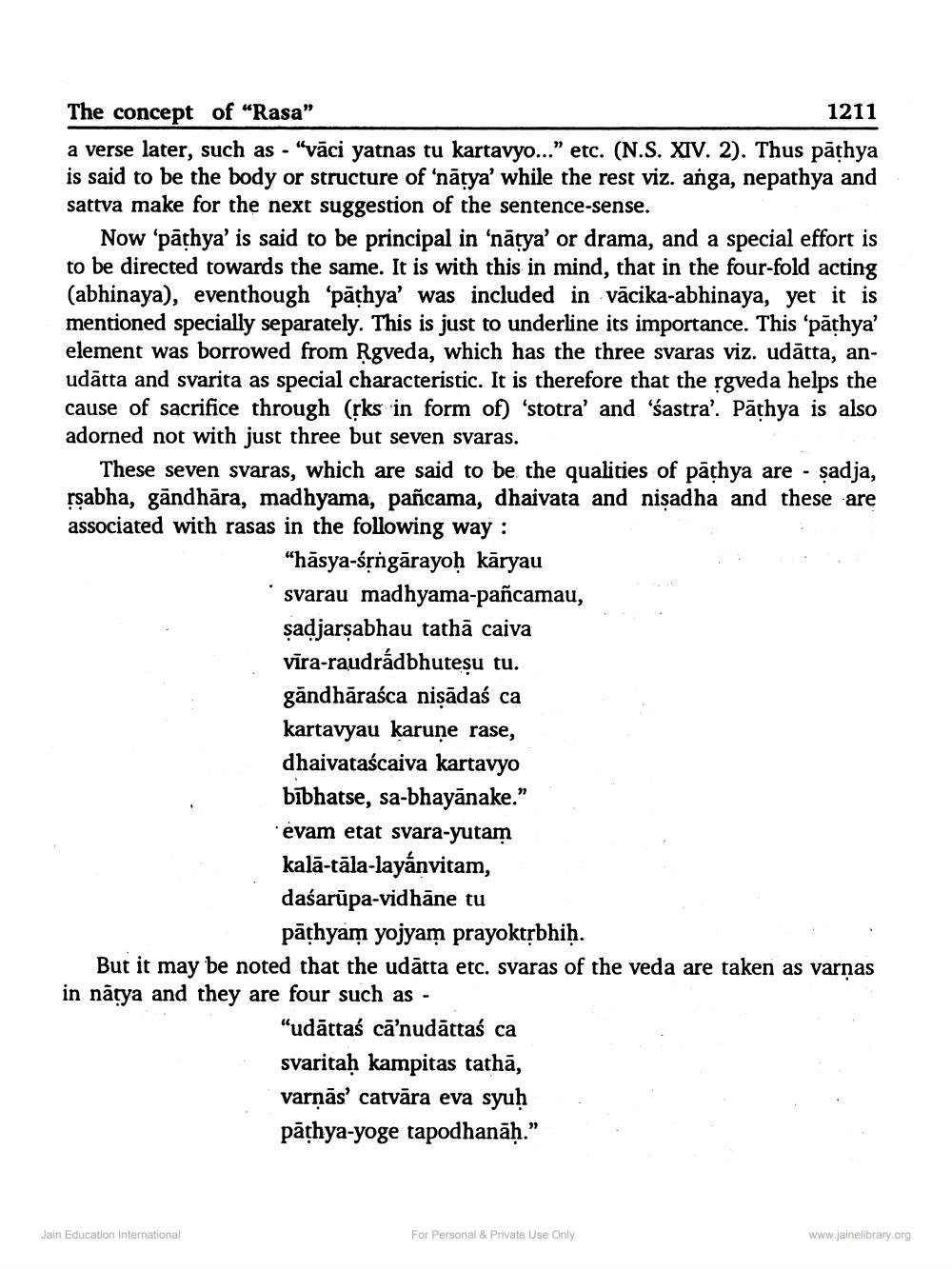________________
The concept of “Rasa”
1211 a verse later, such as - "vāci yatnas tu kartavyo...” etc. (N.S. XIV. 2). Thus pāthya is said to be the body or structure of 'nātya' while the rest viz. anga, nepathya and sattva make for the next suggestion of the sentence-sense.
Now 'pathya' is said to be principal in 'nātya' or drama, and a special effort is to be directed towards the same. It is with this in mind, that in the four-fold acting (abhinaya), eventhough 'pathya' was included in vācika-abhinaya, yet it is mentioned specially separately. This is just to underline its importance. This 'pāthya' element was borrowed from Rgveda, which has the three svaras viz. udātta, anudātta and svarita as special characteristic. It is therefore that the rgveda helps the cause of sacrifice through (rks in form of) 'stotra' and 'sastra'. Pāthya is also adorned not with just three but seven svaras.
These seven svaras, which are said to be the qualities of pathya are - şadja, rsabha, gāndhāra, madhyama, pañcama, dhaivata and nisadha and these are associated with rasas in the following way :
"hāsya-śộngārayoḥ kāryau svarau madhyama-pañcamau, şadjarşabhau tathā caiva vīra-raudrádbhutesu tu. gāndhārasca nişādaś ca kartavyau karune rase, dhaivataścaiva kartavyo bībhatse, sa-bhayānake.” evam etat svara-yutam kalā-tāla-layánvitam, daśarūpa-vidhāne tu
pāțhyam yojyam prayokt;bhiḥ. But it may be noted that the udātta etc. svaras of the veda in nātya and they are four such as -
"udāttaś cā’nudāttaś ca svaritaḥ kampitas tathā, varņās' catvāra eva syuḥ pāțhya-yoge tapodhanāḥ."
Jain Education International
For Personal & Private Use Only
www.jainelibrary.org




